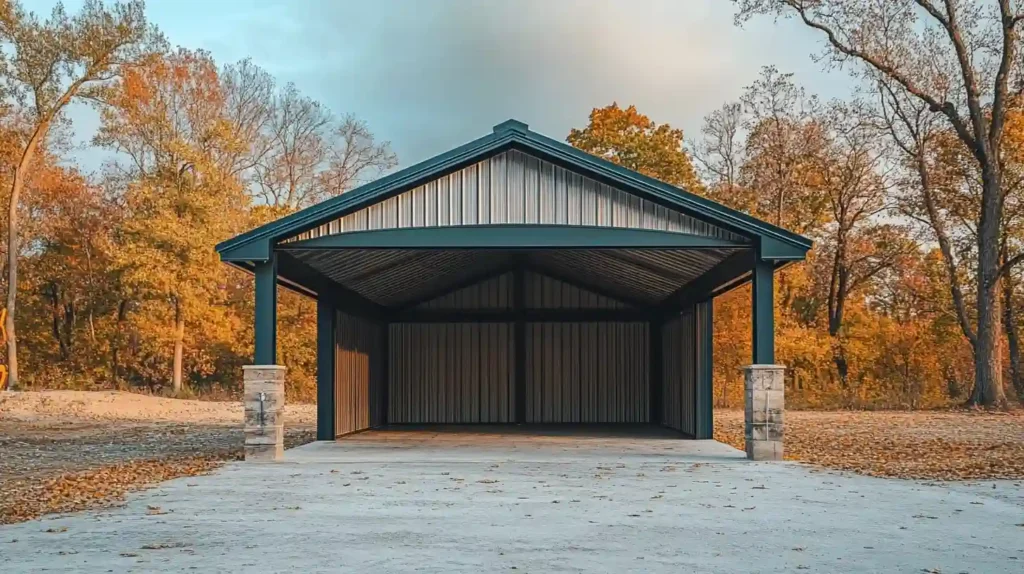
Even after you've decided that a metal carport is the best choice for storing your vehicle, you need to pick the perfect size for your carport. Carports are available in practically any custom configuration, but there are a few common widths based on the manufacturing methods and materials. If you're still weighing your options, it can help to look at the different types of metal buildings to understand what might work best for your space. Deciding how many vehicles you'll be storing in the same structure will help you choose just the right width, length, and height.
These structures can cover anything from a single compact car to a fleet of heavy equipment, so consider these common size categories when making your decision.
Table of Contents
Standard Single Vehicle
Basic one vehicle carports generally need a minimum width of at least 12 feet to accommodate a passenger car, truck, or van. This is enough width to allow doors on both sides of the vehicle to fully open without hitting the walls. 14 and 16 feet widths are also common for single-vehicle carports where a little extra storage space is designed. Extra-wide garage doors may require a wider than normal carport width to support the weight of the frame.
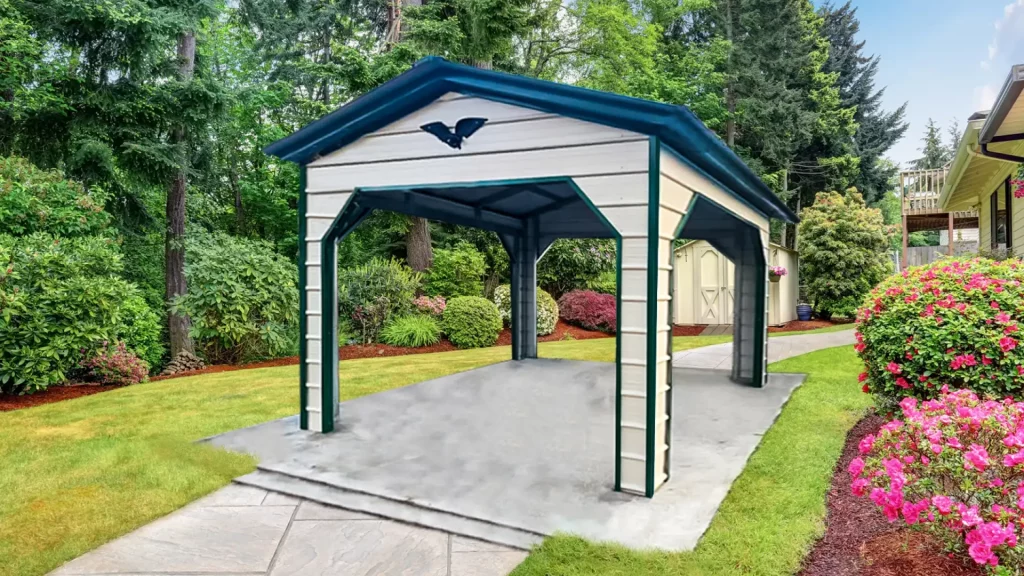
Double Wide Options
If you're aiming to store at least two vehicles side by side at the same time, you'll want a double-wide carport with a width between 18 and 24 feet wide. Eighteen feet will only accommodate compact cars comfortably, while 20 to 22 feet is enough for most passenger cars, smaller SUVs, and small trucks.
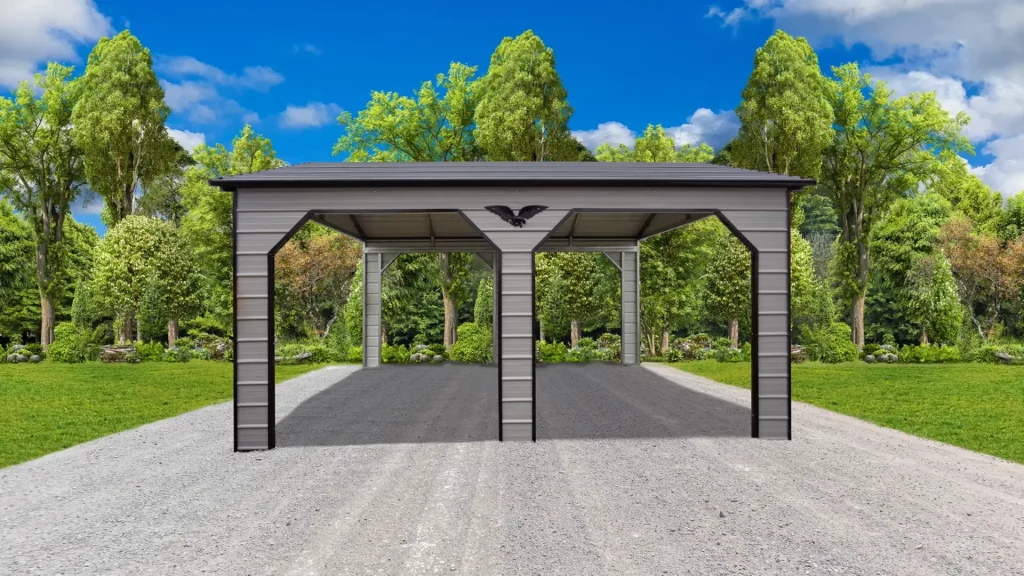
Full-sized vans and trucks may require 24 feet width to open the doors of both vehicles without conflict. Twin sets of matching garage doors can be centered on any even-numbered width measurement with ease, but don't forget to consider the space needed for accessories like powered lifts and automated sensors when checking carport layouts. Choosing the right dimensions of a 2-car garage is something you should consider.
Sizing for Trucks and Oversized Vehicles
When you're storing service body trucks, cargo vans, and similar oversized vehicles in a carport at your home or business, you'll need to expand both the width and length of your carport. A 21’ length is the standard size of the smallest carport, but you can generally extend or shrink the length by any amount in 5-foot increments. A 26- or 31-foot length is often a better choice for commercial vehicles or heavy equipment since they're usually longer than standard trucks and cars.
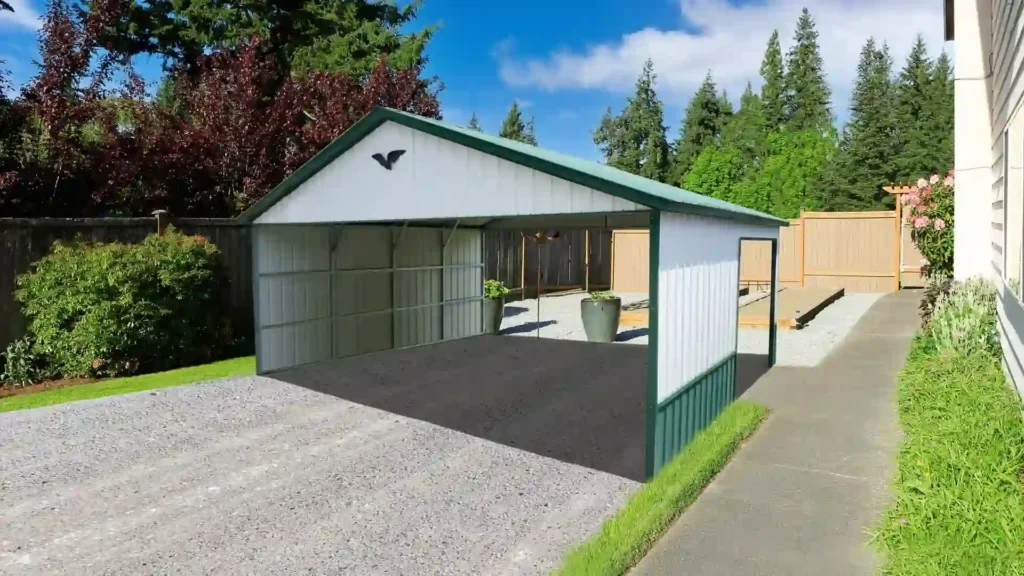
Extending the length is also a good option for additional storage in front of the vehicle, especially if you want to install permanent shelving and cabinets against an end wall.
Commercial Storage Options
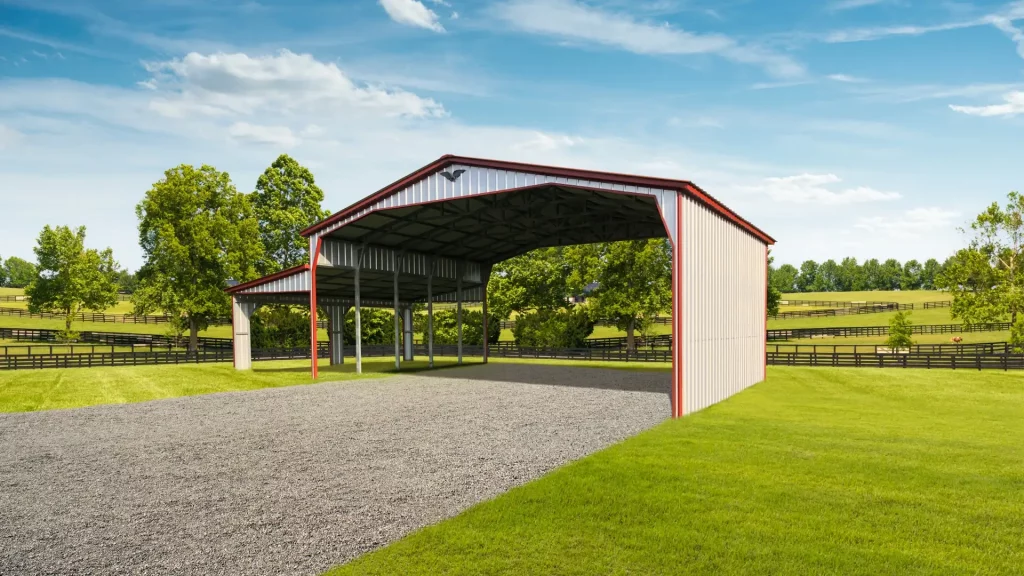
When storing a crane truck, front-end loader, or other large commercial equipment, you'll likely need a height boost, also. Extra width and length won't compensate for a low door height if you stick with a standard carport design. Bump up the height by at least 3 to 5 feet for vehicles with truck bed additions like cranes and booms, or you may need up to 10 to 12 feet in additional height for box trucks and other tall vehicles.
Take accurate measurements of the highest point of a vehicle, then add at least 4 to 5 feet to the total height so that the side height is sufficient for a door with a lot of vertical space.
RV Height and Width Considerations
RVs and fifth-wheel campers carports can require oversized doors with a minimum height of 9 to 12 feet to compensate for attached antennas, satellite dishes, and roof-mounted AC units. If you're storing your RV long-term, investing in a cover designed to protect your RV can help preserve its condition and extend its lifespan. This isn't added to the total roof height but only to the door height itself.
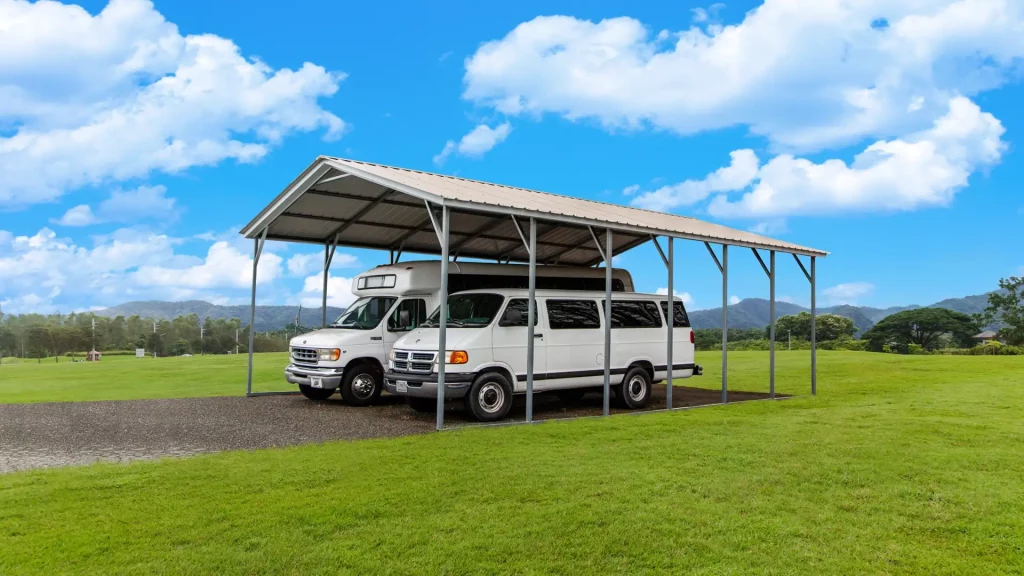
This means that the carport may need even more height added to it to leave enough of a slope on the roof to shed water rapidly. For areas prone to storms or winter weather, it's important to consider wind and snow load ratings when selecting your carport’s structure and roof style.
RVs also tend to push the maximum 8-foot width for road-legal vehicles, requiring a 16- to 20-foot carport width rather than a minimal 12-foot width.
Measuring the RV
Basically, to size a carport for an RV:
Measure the RV’s length, including any overhangs or bumpers
Measure the RV’s width, including slide-outs
Measure the RV’s height, including any roof-mounted accessories like air conditioners
Add extra space for maneuverability and storage
Measure the total length of the RV and add 4 to 8 feet so you can pull in easily without having to squeeze too close to the front wall just to close the door. A common starting point is a 12-foot width for standard RVs, 18-foot for those with slide-outs, and a length that comfortably accommodates the RV plus extra space.
Measuring the Carport Dimensions
Width
- Standard RV: A 12-foot wide carport is a common starting point.
- RVs with Slide-Outs: Consider an 18-foot wide carport to accommodate extended slide-outs.
Length
- Add at least 3–5 feet to your RV’s length to allow for easy access and maneuvering.
- Consider the length of your RV plus extra space for storage or other items.
Height
- Consider the height of your RV plus any roof-mounted accessories, like air conditioners.
- Ensure the carport height is at least 12 to 14 feet to accommodate most RVs, especially Class A and C.
Metal RV Cover Sizes by RV Type
This chart details the cover sizes required by each RV type:
| RV Type | Recommended Cover Size (W x L x H) | Notes |
|---|---|---|
| Small Camper / Teardrop / Pop-Up | 12' x 20' x 10' | Ideal for compact campers and pop-ups under 20' |
| Travel Trailer (20–25 ft) | 12' x 25' x 10' | Plenty of room for standard travel trailers |
| Class B Motorhome / Mid-Size Trailer | 12' x 30' x 12' | Extra length for maneuvering space |
| Class C Motorhome / Fifth Wheel (30–35 ft) | 18' x 35' x 14' | Extra width for slide-outs and height clearance |
| Class A Motorhome / Toy Hauler (35–45 ft) | 20' x 45' x 16' | Oversized cover for the largest RVs on the road |
Metal RV Garage Sizes (Fully Enclosed with Doors)
This chart details the recommended garage size for specific types of RVs.
- Pop-up and small trailers should have a garage size of 14’W x 25’L x 10’H and a roll-up door size of 9’ x 8’.
- Travel trailers that are 20 to 25 feet require a garage size of 16’W x 30’L x 12’H with a roll-up door size of 10’ x 10’.
- Class C motorhomes (and fifth wheels) require a garage size of 18' x 40' x 14' with a roll-up door size of 12’ x 12’.
- Class A motorhomes with a large toy hauler require a garage size of 20' x 50' x 16' with a roll-up door size of 14’ x 14’.
| RV Type | Recommended Garage Size (W x L x H) | Roll-Up Door Size | Notes |
|---|---|---|---|
| Pop-Up / Small Trailer | 14' x 25' x 10' | 9' x 8' | Protects from weather, pests, and UV damage |
| Travel Trailer (20–25 ft) | 16' x 30' x 12' | 10' x 10' | Full enclosure for security and winterization |
| Class C Motorhome / Fifth Wheel | 18' x 40' x 14' | 12' x 12' | Room for mirrors and roof A/C units |
| Class A Motorhome / Large Toy Hauler | 20' x 50' x 16' | 14' x 14' | Commercial-sized access for big rigs |
Top Height and Side Height
Finally, don't forget that the total top height of the roof's peak is different than the side height. Side heights measure the highest point of the side walls, which limits the height of the garage doors installed on the structure. If you have a 9-foot-tall RV and buy a carport that only has a maximum top height of 10 feet at the gable, your RV is unlikely to make it through the bay door. Check both the top and side height of a structure before assuming it will fit a particular vehicle inside of it.
With these figures, you should have a rough idea of the measurements you need for your carport. Try laying out the various sizes with some contractor's tape to get a feel for various combinations of dimensions, or explore layouts virtually using our 3D carport builder to adjust width, height, and length in real time. Once you know your ideal size, you can browse our metal carports and start building a structure that fits your vehicle and space.


